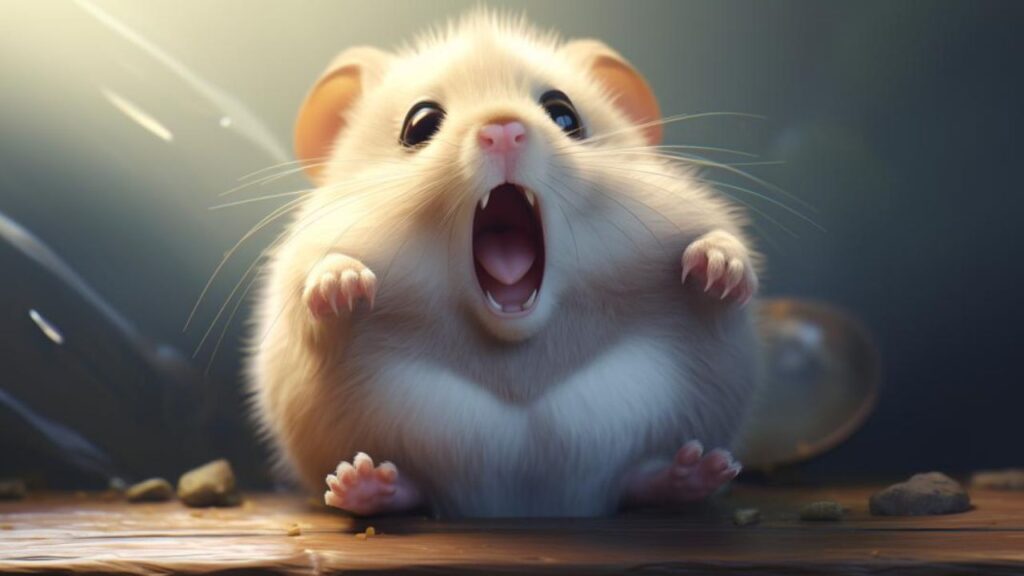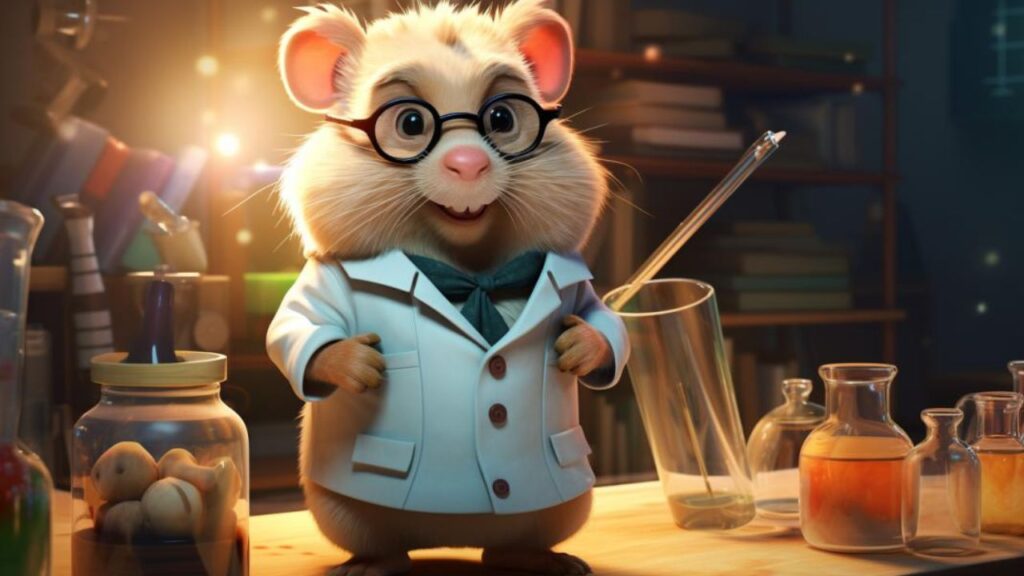TL;DR Summary
Yes, hamsters do fart as part of their normal digestive process. Flatulence in hamsters is typically mild and not as noticeable due to their small size. It’s important for pet owners to maintain a healthy diet for their hamsters to support digestive health and prevent any discomfort from excessive gas. Monitoring your hamster’s diet and behavior is key to their overall well-being. Remember, a happy hamster is a wheel-y happy you!
In the charming world of small mammals, hamsters are often the subject of fascination due to their endearing behaviors and unique physiology. Among the myriad of questions that hamster enthusiasts and pet owners ponder, one particularly curious inquiry stands out: do hamsters fart? This question not only tickles the funny bone but also touches upon the more serious topic of the digestive processes in these tiny creatures.
The Fascination with Hamster Digestion
The digestive system of a hamster is a wondrous microcosm, finely tuned to turn seeds, fruits, and vegetables into the energy that fuels their ceaseless activity. Understanding how this intricate system works is crucial for maintaining the health and happiness of these pets. Yet, the process of digestion in such small animals often remains shrouded in mystery — especially when it comes to the production of gas, a natural byproduct of many digestive systems.
Flatulence: A Natural Phenomenon?
Flatulence, or the passing of gas, is a common biological function across many species, including humans. It’s the result of the digestion and fermentation of food, particularly certain types of carbohydrates that are not easily broken down in the stomach or small intestine. When it comes to hamsters, the question arises: does their digestion follow a similar pattern, and if so, can it lead to the occasional escape of gas?
Understanding Digestion in Hamsters

The digestive system of a hamster is a marvel of efficiency, designed to extract nutrients from a variety of foods to sustain their high-energy lifestyle. But what happens from the moment a hamster takes a bite of food to the potential creation of gas? Let’s delve into the workings of a hamster’s digestive tract and the diet that fuels it.
The Hamster’s Digestive Tract: A Complex Conveyor Belt
From the moment a hamster begins to chew, its digestive system embarks on a complex process:
- Mouth and Teeth: Hamsters have sharp incisors that continually grow, allowing them to break down food effectively. The process of chewing not only reduces food to manageable portions but also mixes it with saliva, which contains enzymes that begin the digestion process.
- Stomach: The chewed food travels to the hamster’s stomach, where gastric acids and enzymes further break down the food into a semi-liquid form called chyme.
- Intestines: The chyme then moves into the small intestine, where the majority of nutrient absorption occurs. The hamster’s efficient small intestine extracts a variety of nutrients, which are then transported around the body via the bloodstream.
- Cecum and Colon: The large intestine and cecum, a pouch connected to the junction of the small and large intestines, play a significant role in fermenting indigestible fibers, leading to the production of certain gases.
Hamster Diets and Potential Gas Production
While hamsters can experience gas just like many other animals, their diet is the primary factor that influences this:
- High-Fiber Foods: Hamsters require a diet rich in fiber, which is found in fresh vegetables and certain fruits. While fiber is crucial for digestive health, the fermentation of fiber can produce gases such as methane and carbon dioxide.
- Proteins and Sugars: Excessive protein or sugary foods can also cause gas. Proteins can putrefy when digested, while sugars may ferment, both leading to gas production.
- Commercial Diets: Some commercially available hamster foods contain a variety of ingredients, and not all may be equally digestible for every hamster. Some components may lead to increased gas production if they are not well-tolerated by the hamster’s digestive system.
Flatulence in Hamsters: Myth or Reality?

The topic of flatulence in hamsters often prompts a mix of humor and curiosity. But beyond the chuckles lies a genuine biological question: do these small mammals experience the same digestive release as other species? Delving into the studies of rodentology provides us with a clearer picture.
Insights from Rodentology
Research in rodentology, while often focusing on broader aspects of health and behavior, does touch upon the digestive processes:
- Digestive Similarities: Like many mammals, hamsters have a gastrointestinal system that produces gas as a byproduct of digestion. The presence of a cecum, where fermentation of food occurs, is particularly relevant. This is a site where gas can form as a natural result of microbial activity on the food matter.
- Observational Studies: Direct observations of hamsters, as well as anecdotal reports from pet owners, do suggest that hamsters can pass gas. Although it may not be as noticeable due to their small size, it’s a normal part of their digestive process.
Hamster Flatulence Compared to Other Animals
When we consider other animals known for their flatulence, such as cows or even humans, there are some differences:
- Dietary Impact: The diet of a hamster is less varied in fermentable substrates compared to larger herbivores, which may result in less gas production.
- Size and Scale: The small size of hamsters means that any gas produced is minimal and less likely to be detected than in larger animals.
- Frequency and Noticeability: While there’s no definitive measurement of the frequency of hamster flatulence, it is believed to be a less frequent and less noticeable event due to their size and the nature of their diet.
The Reality of Hamster Gas
The consensus among experts is that hamsters, like all mammals, do have the physiological capability to pass gas. However, the manifestations of this may be far subtler than in larger animals due to the differences in size, diet, and the microbial populations in their guts.
Whisker Tips: Diet and Digestive Health

Maintaining your hamster’s digestive health is paramount, as it not only affects their comfort but their overall vitality. A hamster’s diet is intricately linked to the health of their digestive system. Here are some ‘Whisker Tips’ to ensure your hamster’s meals are as pleasant on the way in as they are on the way out.
Optimizing Hamster Diets for Digestive Comfort
- Fiber First: Provide a diet high in fiber, which is essential for a healthy digestive system. However, ensure it is balanced to prevent excessive gas. Fresh vegetables like cucumbers and bell peppers can be good, low-gas options.
- Quality Commercial Feed: Choose a high-quality commercial hamster feed that’s formulated to meet all of their nutritional needs without unnecessary fillers that can cause gas.
- Gradual Dietary Changes: When introducing new foods to your hamster, do so gradually. Sudden changes can disrupt their gut flora, leading to fermentation and gas.
- Probiotics: Consider adding probiotics designed for small pets to support a healthy balance of gut bacteria, which can aid in digestion and reduce gas production.
- Fresh Water: Ensure that your hamster has constant access to fresh water, as proper hydration is crucial for digestion.
Detecting Digestive Discomfort in Hamsters
Even with the best dietary care, hamsters can experience digestive issues. Here’s what to look out for:
- Changes in Appetite: A loss of interest in food or a sudden increase in appetite can both be signs of digestive distress.
- Abnormal Feces: Watch for changes in feces, such as diarrhea or unusually hard droppings, which can indicate digestive problems.
- Bloating: A distended abdomen can be a sign of gas buildup and should be addressed promptly.
- Lethargy: If your hamster is less active than usual, it could be experiencing discomfort from digestive issues.
- Chewing Habits: A decrease in chewing activity can lead to overgrown teeth, which can impact a hamster’s ability to eat and digest food properly.
The Role of Gut Flora in Hamster Health

In the bustling ecosystem of a hamster’s gut, trillions of microorganisms play a pivotal role in their host’s well-being. This complex community, known as the gut flora or microbiome, is an unseen powerhouse that dictates much of a hamster’s digestive health.
The Balancing Act of the Gut Microbiome
A balanced gut microbiome is essential for various aspects of a hamster’s health:
- Digestion: Beneficial bacteria break down food components that the hamster’s own digestive enzymes cannot, aiding in nutrient absorption.
- Immune Function: A significant portion of the hamster’s immune system is located in their gut. The microbiome interacts with immune cells, training them and modulating immune responses.
- Synthesis of Vitamins: Some gut bacteria are capable of synthesizing B vitamins and vitamin K, which are crucial for the hamster’s overall health.
Gut Flora and Gas Production
The relationship between gut flora and gas production is intricate:
- Fermentation: Gut bacteria ferment indigestible carbohydrates, resulting in the production of gases like hydrogen, methane, and carbon dioxide. This is a normal process, but imbalances can lead to excessive gas.
- Dietary Influence: The composition of a hamster’s diet can significantly affect the types of bacteria that thrive in the gut. Diets high in fermentable carbohydrates may increase gas-producing bacteria.
- Dysbiosis: An imbalance in gut bacteria, or dysbiosis, can lead to digestive upset and increased gas production. This can be due to poor diet, illness, or antibiotics disrupting the microbial community.
Supporting a Healthy Gut Flora
To promote a healthy gut microbiome in hamsters:
- Varied Diet: Offer a variety of foods to promote a diverse microbial population, including fresh vegetables, high-quality pellets, and occasional fruits.
- Prebiotics: Include prebiotic foods, like small amounts of inulin-rich vegetables, which provide nourishment for beneficial gut bacteria.
- Avoid Antibiotics: Only use antibiotics when necessary and under veterinary guidance, as they can disrupt the normal gut flora.
Conclusion: Clearing the Air on Hamster Flatulence

As our exploration of hamster flatulence concludes, we’re reminded of the delicate intricacies of hamster care. From the rumble of their tiny tummies to the complexities of their digestive processes, each aspect of their biology is a finely tuned system that demands our attention and understanding.
Reflecting on the Hamster’s Digestive Symphony
We’ve delved into the inner workings of a hamster’s gut, unraveling the mysteries of their digestive system, and in turn, the phenomenon of flatulence — a normal, albeit often humorous, biological function. Flatulence in hamsters, while subtle, is a natural byproduct of a healthy and active gastrointestinal tract.
The Implications for Hamster Care
This digestive quirk serves as a reminder of the broader implications for hamster care:
- Dietary Management: A balanced diet, rich in fiber but not overly abundant in fermentable substrates, is essential to prevent excessive gas and ensure your hamster’s digestive comfort.
- Environmental Considerations: Creating a stress-free habitat with ample space for exercise contributes to a healthy digestive system.
- Health Monitoring: Regular observation for signs of digestive discomfort or changes in behavior can help detect issues before they become problematic.
The Big Picture of Digestive Health
Understanding your hamster’s digestive health is about more than preventing a few extra bubbles in their bedding; it’s about ensuring their total well-being. A hamster with a healthy gut is more active, more engaged, and undoubtedly happier.
In the end, while hamsters may pass gas as part of their normal digestive process, our role as caretakers is to ensure that such occurrences are nothing more than a minor, natural event in their happy, healthy lives. By fostering a well-balanced diet and understanding the nuances of hamster health, we create an environment where our hamsters can flourish. And so, with a nod to their digestive health, we’re reminded once again: a happy hamster is a wheel-y happy you!




